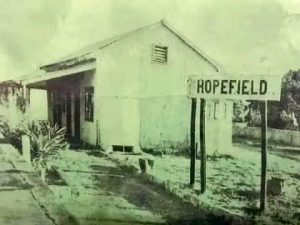This is more then a story to me – born in this town in 1956
Editor/Reporter – George April
Hopefield:- the oldest town on South Africa’s Cape West Coast, is proudly recorded in history books as having been founded in 1852 on the farm Langekuil.
It all started after the Dutch Reformed congregation (Zoute Rivier) was established in December 1851. Farmers pooled funds for its construction, and in 1914 it became a municipality. The town’s name came from two men who laid it out, Major William Hope, Auditor-General, and Mr Field.
In its earlier days, Hopefield was regarded as the capital of the West Coast, with banks, filling stations, and bustling businesses. It was the gateway to Vredenburg, Langebaan, and Saldanha, until the R45 was rerouted and the R27 (West Coast Road) shifted traffic and commerce away from the town.
That’s the history you’ll find in archives, travel guides, and heritage write-ups. But for many long-time residents, this is only half the story.
Missing from most “official” accounts are the decades before 1851, when the land was still Langekuil Farm and home to people whose names rarely appear in records.
Including those of Bruinman, Coloured, and Khoisan heritage.
Equally absent are the stories of three important buildings remembered by locals:
The Three Missing Buildings of Hopefield’s History
1 – The Old School
- Educated local children up to Standard 6 (Grade 8).
- Demolished during apartheid restructuring.
2 – The Anglican Church
- A spiritual home where families gathered every Sunday.
- Also destroyed when apartheid reshaped the town.
3 – The Original NG Kerk
- Once a central landmark with its own tower.
- Tower and original features removed; building converted into the current public library.
These buildings are rarely shown in “historic” posts, yet they carry the stories of generations _ especially the voices often left out of the official narrative.
The first two buildings were destroyed under apartheid. The third remains, but is so altered that its historic form is barely recognisable.
By excluding these structures and the people connected to them, the public version of Hopefield’s history risks erasing the lived experiences of an entire community.
As one resident, Claud Cleo put it: “The town existed before apartheid made its entrance. Without these buildings and the stories they hold, we are telling only half the truth.”
For Hopefield’s history to be complete, it must include all voices – from the earliest inhabitants of the 1700s, through the days of Langekuil Farm, to the bustling hub that once stood at the heart of the West Coast.

